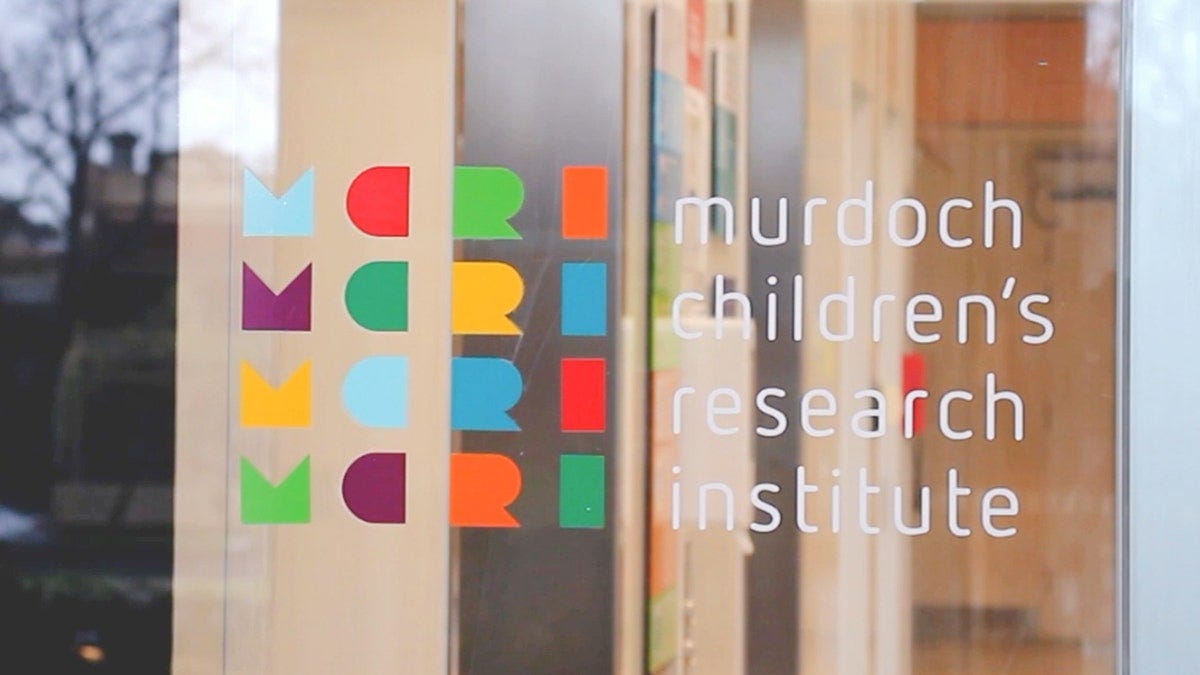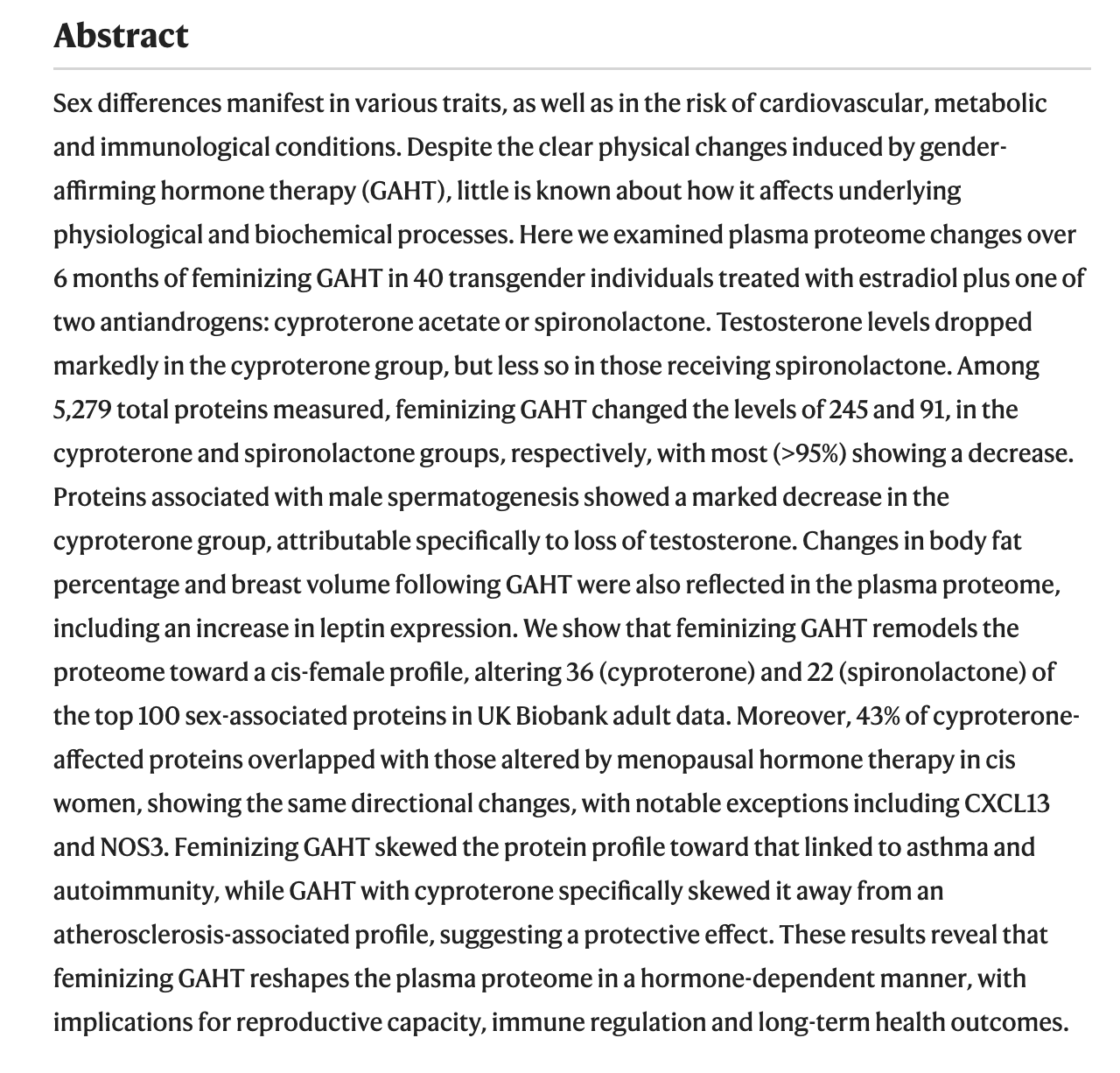Study Finds Trans Women's Blood Proteins Resemble Cis Women's After 6 Months on HRT
“Feminizing GAHT [gender-affirming hormone treatment] skews the plasma proteome toward a cis-female profile,” the study concluded.
A study by researchers at the University of Melbourne in Australia and the Murdoch Children’s Research Institute (MCRI), published this week in Nature Medicine, analyzed over 5,000 proteins from the blood samples of 40 transgender Australians who underwent hormone replacement therapy (HRT) with estradiol and an antiandrogen. What they found is that, after mere months of HRT, trans women’s bodies may change down to the molecular level.
“This highlights that human biology is malleable and that even in adulthood, our bodies respond to sex hormone changes,” co-author Dr. Boris Novakovic said in a press release about the project. In other words, the endeavor shows the true range and plasticity of human bodies, including the idea of sex, which many gender conservatives falsely argue is immutable, binary, and stagnant.
These antiquated notions of sex have been used to justify segregation in everything from bathrooms to sports to competitions like e-sports and chess.
Beyond the gender culture wars, however, the study serves a more tangible and utilitarian function: helping inform our understanding of gender medicine, so trans people can have the best quality of care and health outcomes. HRT, like any medical treatment, can have side effects—both for trans people and cisgender people, who have been safely and effectively using hormone therapy for decades to treat everything from acne to erectile dysfunction.
“For transgender women, we found gender affirming hormone therapy alters the levels of many protein biomarkers,” Novakovic said, noting that this could impact risk assessments for things like autoimmune disease and heart conditions. Usually, these assessments factor in any number of variables, including sex as well as lifestyle or genetic components.
“Feminizing GAHT [gender-affirming hormone therapy] skews the plasma proteome toward a cis-female profile,” the study concluded. It should be noted that people of any sex or gender can exhibit a vast and evolving spectrum of these biomarkers—there is no “one size fits all” model for biodiversity.
But due to right-wing fearmongering surrounding HRT for trans people, there’s a disproportionate amount of fanfare dedicated to debating whether this kind of care, which is life-saving and evidence-based, should be legal at all. When space is given to scientists to go beyond this baseline framework, we can instead work towards a future where trans people don’t just have health care, but the highest quality health care possible.
The abstract can be seen below, and the full study is here.





Indeed. Biology works.
We knew that GAHT was doing something. It's nice to get confirmation at the molecular level.